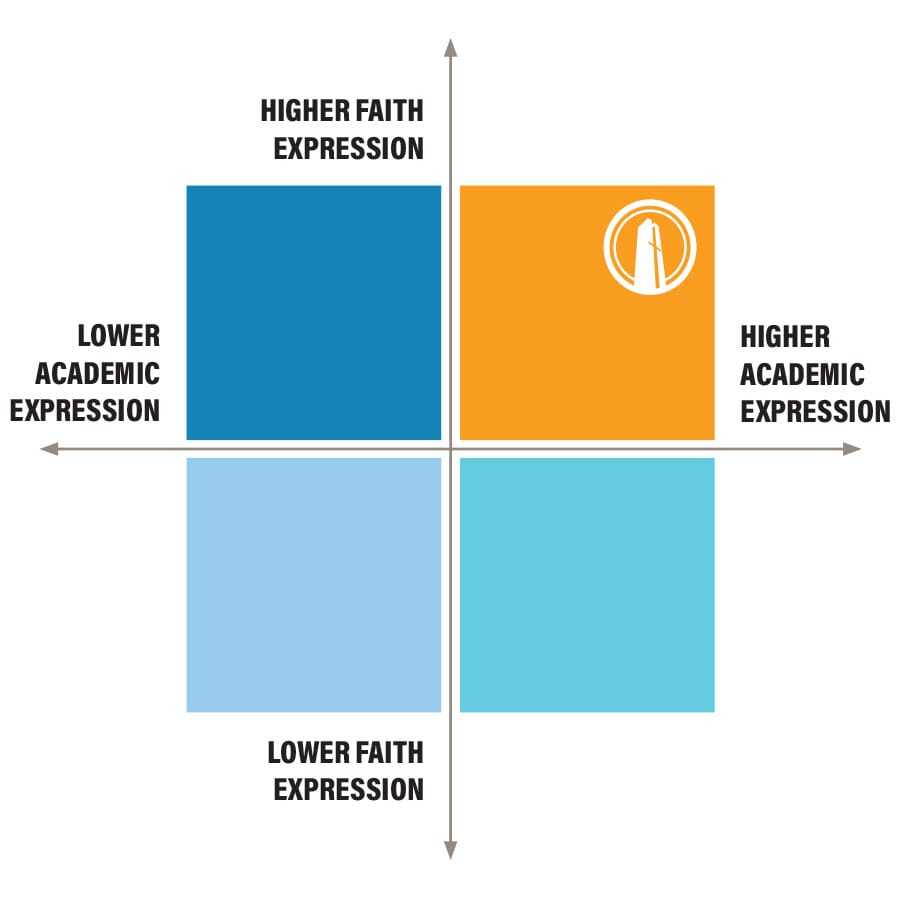Strategy Road Map
Founded by business leader and entrepreneur George Pepperdine in 1937, Pepperdine University has grown from a single undergraduate campus located near Downtown Los Angeles to multiple campuses in the United States, including Washington, DC, and worldwide, that offer bachelor's, master's, and doctoral degrees. More than 126,000 living alumni lead and serve around the globe, and contribute to Pepperdine's growing reputation as a leading national university.
Pepperdine aspires to become a global leader in Christian higher education. With a distinguished faculty, extraordinary staff, talented students, and increasingly engaged alumni, Pepperdine is poised to ascend to new heights of excellence in the decade ahead. The Pepperdine 2030 Strategic Plan, relying upon the Board of Regents' Strategic Guidance document and President Gash's strategic vision, advances the University's distinctive identity, leverages Pepperdine's considerable strengths, and illuminates the way forward and upward.
The plan focuses on the University's aspiration for missional excellence, which is defined by the relentless pursuit of truth and faith together and an enduring commitment to students as the heart of the educational enterprise. As a Christian university, Pepperdine seeks to sustain its deep ties to Churches of Christ and welcome a diverse community of learners and scholars from different faith traditions, backgrounds, and perspectives. Pepperdine's distinctiveness is built on a foundation of faith and truth seeking that binds together every aspect of the University's life.
We have developed a strategic plan that is both anchored in the unchanging values and ideals of the University and flexible enough to adapt to new and evolving opportunities and challenges. We lean into our future with faith in God's providence and with confidence that Pepperdine has the people, the mission, the vision, the values, the resources, and the resilience to thrive. Pepperdine has aspired, rightly, to preeminence as a global, Christian university. Now, more than ever, we are prepared to fulfill our aspiration and to be one.
The Strategy Road Map provides an overview of the University's strategic plan, highlighting its flow and structure. Our mission and vision statements, which define our identity and purpose, precede and lay a foundation for the actual 2030 Strategic Plan.
The plan then is divided into three sections:
(1) Animating Convictions, (2) Empowering Commitments, and (3) Strategic Objectives.
First, the five Animating Convictions define Pepperdine's Christian identity and are
central to Pepperdine's mission and vision. They each give life, purpose, and inspiration
to the University community. Second, the Empowering Commitments—expanded resources
and partnerships, reputational strength, strategic innovation, and mission-enhancing
technology—are the means to achieving our strategic goals and priorities. Third, the
Strategic Objectives outline how Pepperdine will allocate its resources to meet the
next decade's challenges and opportunities. As noted in the Preamble, the strategic
planning process is ongoing. Thus, these objectives and goals will be assessed regularly
and, if necessary, the strategic plan will be revised in light of new opportunities
and challenges.
The Animating Convictions, Empowering Commitments, and Strategic Objectives reflect the University's pursuit of pervasive missional excellence as Pepperdine seeks to align every aspect of the University with its mission and vision. The commitment to strategic planning calls us to resist the temptation to be all things to all people. Instead, as the University's resources grow in the coming years, the strategic planning process sets priorities for stewarding all of its resources—its dedicated people, its beautiful campuses, its growing reputation, its technological expertise, and its financial strength.
Pepperdine's Christian mission compels the University to set the highest standards of excellence throughout the institution and for every University stakeholder—students, faculty, staff, alumni, boards, donors, parents, and friends. Pepperdine is committed to excellence not only in its undergraduate liberal arts college and its professional and graduate schools, but also in its international programs and programs for student services, athletics, the arts, alumni, University advancement, and business operations. The faith and academic expression diagram shown on this page reflects Pepperdine's strategic position as we aspire to become a preeminent, global, Christian university.
Achieving excellence as the University's mission envisions calls the entire University community to follow God's design for His creation and embrace integrated wholeness. In a time of increasing polarization, politicization, fragmentation, and division, Pepperdine aspires to be a place of wholeness—as individuals, as learners and scholars, as a community, and as believers. Pepperdine 2030 seeks to achieve integrated wholeness by:

